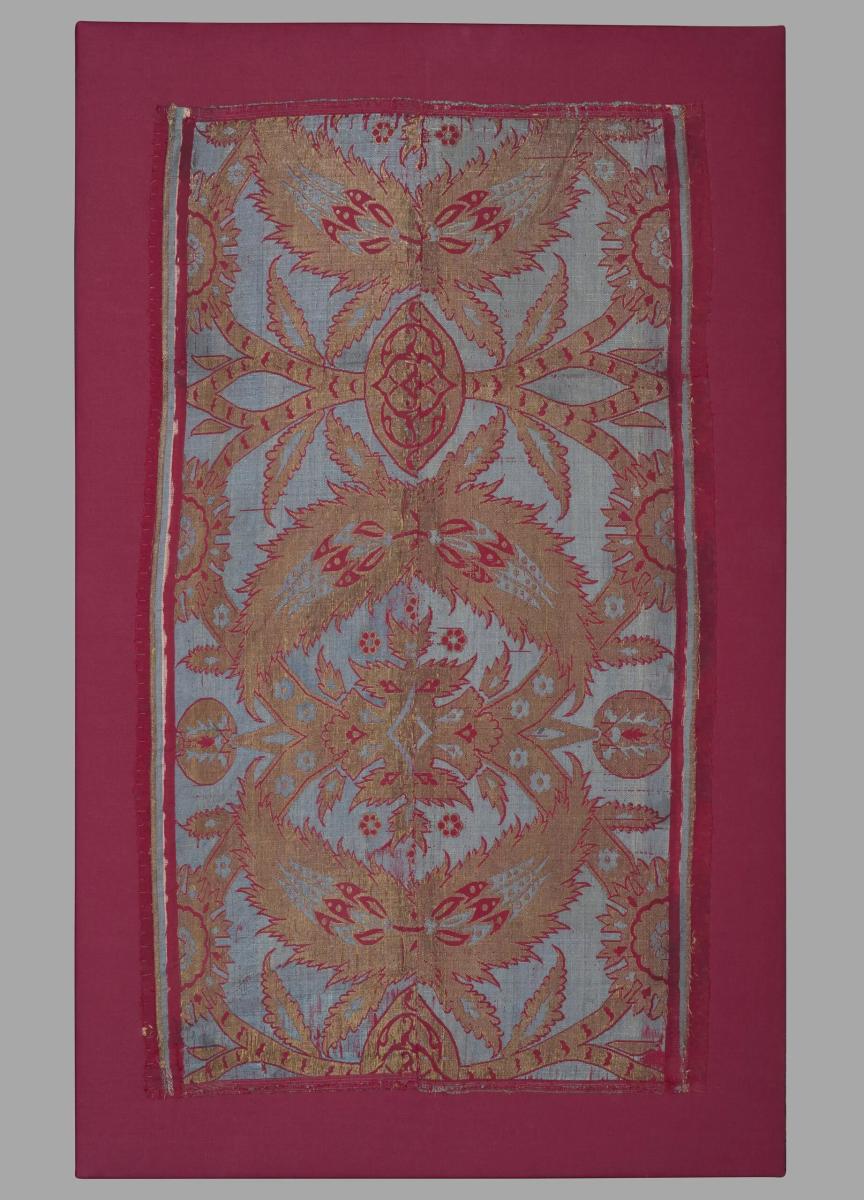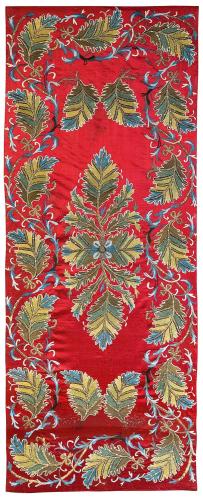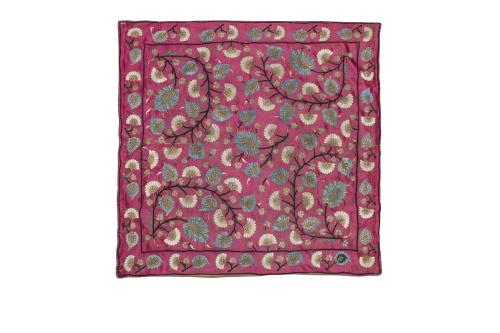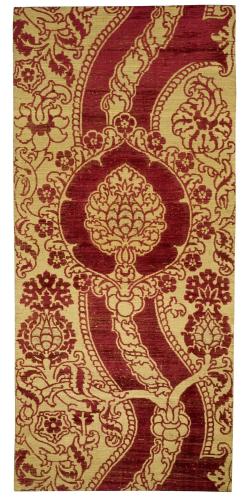

Price on application
This object is eligible for a Certificate of BADA Provenance
The BADA Standard
- Since 1918, BADA has been the leading association for the antiques and fine art trade
- Members are elected for their knowledge, integrity and quality of stock
- Our clients are protected by BADA’s code of conduct
- Our dealers’ membership is reviewed and renewed annually
- Bada.org is a non-profit site: clients deal directly with members and they pay no hidden fees
Ottoman Silk Lampas Decorated with Tulips and Saz Leaves.
Ottoman Empire.
16th Century.
Dimensions: 61 x 52 cm.
Silk lampas decorated with symmetrically arranged tulips on saz leaves surrounded by flower heads.
Tulips were among the most favoured flowers in the Ottoman decorative repertoire. The tulip has a symbolic meaning. The letters of the word tulip (Lâle [لاله]) in Turkish and Persian are the same letters used for writing the word Allah [الله] (God). These two words have the same numerological value in the abjad system (a decimal alphabetic numeral system in which the twenty-eight letters of the Arabic alphabet are assigned numerical values). Tulip is one of the leading decorative elements in Ottoman art; frequently used together with roses, hyacinths, saz leaves. It is also used with khataiblossoms as can be seen in the present tile. Tulip also played a role in imagery in Ottoman poetry. In many poems, tulip leaves are likened to the cheeks of the beloved. The word lāleh-khad (lâle-had), often used in Ottoman poetry, means ‘tulip-cheeked’. Tulips were among the most favoured motifs used in the Ottoman court workshops in the 16th century. The name ‘tulip’ is thought to have derived from the Turkish word tülbend (from the Persian word دلبند [dulband]) -meaning ‘large cotton band which is used in the making of turban or headgear’- because of the fancied resemblance of the flower to a turban.
During the 16th and 17th centuries interest in tulip breeding grew in Istanbul and şükufenames (books on flowers) and treatises were written about tulips. For further information please see, Motif from the Sadberk Hanım Museum Collection (written by Turgut Saner, Şebnem Eryavuz and Hülya Bilgi), Sadberk Hanım Museum, Istanbul, 2020, pp. 90-93.
The saz leaf seen on the present silk lampas is an important motif frequently used by the artists employed in the Ottoman court studio. The first representative of the saz style at the Ottoman palace was Şahkulu, an artist brought from Tabriz by Sultan Selim I (r. 1512-1520). This style was a departure from the classical miniature painting, characterised by pictures drawn with a brush in black ink, featuring long pointed leaves, giving birth to the term ‘saz leaf’. Paintings in the saz style may remind a thick forest with intertwined curved leaves and khatai blossoms. In fact, the word saz, used to mean ‘forest’ in the Dede Korkut stories that date back to the 10th or 11th century. For further information please see, Motif from the Sadberk Hanım Museum Collection (written by Turgut Saner, Şebnem Eryavuz and Hülya Bilgi), Sadberk Hanım Museum, Istanbul, 2020, p. 106.
A comparable silk decorated with tulips and saz leaves is in the textile museum Abegg-Stifftung, Riggisberg-Berne (Inv. No. 345). Please see, Nurhan Atasoy, et al. İpek – The Crescent & the Rose: Imperial Ottoman Silks and Velvets, Azimuth Editions, London, 2001, p. 284, pl. 245.
Provenance
-Ex-Charles Ratton Collection, Paris.
-Exhibited in the International Sesquicentennial Exposition (World Fair, Philadelphia) in 1926 which was organized to celebrate the 150th anniversary of the independence of USA.
Charles Ratton (1895-1986)
Born in 1895, Charles Ratton was a world-famous art collector, expert and dealer who was a famous defender of art from Africa, Asia, the Americas and Oceania. He gained an art history degree from the Ecole du Louvre in Paris. In the early years of his studies he was interested in the art of the Middle Ages and Renaissance. By the 1920s he became interested in tribal art. Ratton was granted a dealer’s license in 1927. He founded his business at his apartment on rue de Marignan. In the 1930s he organised several important exhibitions. He became close friends with Andre Breton, Tristan Tzara and Paul Eluard. In 1936 he held and exhibition of surrealist works at his gallery. He played an important role in the formation of the US market in tribal art. He passed away in 1986. For further information please see, Gareth Harris, ‘Tribute to a Tastemaker: Charles Ratton’, Financial Times, 19 July 2013.
Dimensions
61 x 52 cm.The BADA Standard
- Since 1918, BADA has been the leading association for the antiques and fine art trade
- Members are elected for their knowledge, integrity and quality of stock
- Our clients are protected by BADA’s code of conduct
- Our dealers’ membership is reviewed and renewed annually
- Bada.org is a non-profit site: clients deal directly with members and they pay no hidden fees




